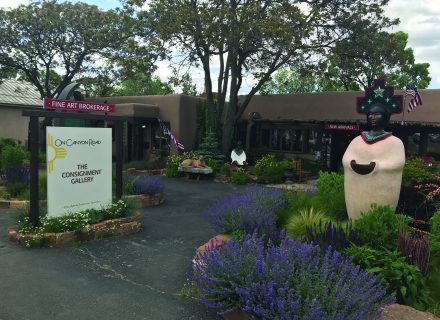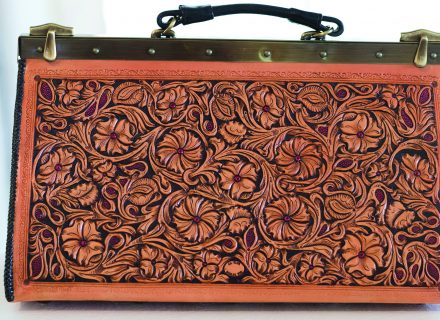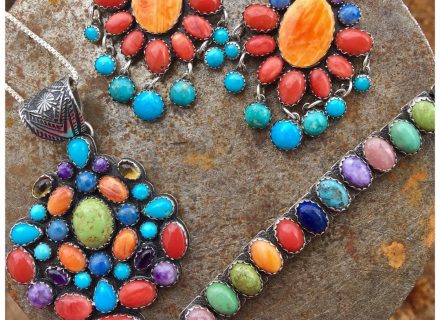The scratches on the wall, a tiny shadow behind a string, the intricate beadwork, and one of the most recognizable motifs in his paintings, handmade Native American pots — are what artist William Acheff is best known for, sometimes in astonishing miniature renderings.
Toward the end of Kit Carson Road in Taos, New Mexico, sometime between 9 and 10 in the morning, artist William Acheff goes to his upstairs studio and paints. He paints realistic images of thoughtfully arranged pots and beaded moccasins. Often there are photographs in his paintings, such as those by Edward Curtis, who was famed for portraits of Native Americans. “I finished a painting today. It’s a good feeling,” Acheff says one afternoon, ending his day earlier than usual. “When you start a painting and you’re excited about it, you work, work, work, work, and then you get on the top of the curve, and it’s easier, and it flows, and that could last for days. Then there’s a turning point when it looks really good.”
The newly finished piece, which took three weeks from start to finish, is called Indian Way. “It has seven photographs in it,” he says. “It’s like a barn cabinet door painted green that’s chipped and scratched. Actually, three are photographs and four are prints from different artists. It’s all about Indians — Chief Joseph as well as Plains Indians. It was tedious and hard on the eyes. All of that detail drives you crazy.”
Click on the image above to view the slideshow.
But those details — the scratches on the wall, a tiny shadow behind a string, the intricate beadwork, and one of the most recognizable motifs in his paintings, handmade Native American pots — are what he is best known for, sometimes in astonishing miniature renderings. “I love the old pots,” Acheff says. “I have close to a hundred of them. There’s a character to them. Somebody created them. There’s a consciousness to them. They’re used for storing or cooking, and there’s a quality, a patina.”
Acheff’s process often begins with seeing a photograph or a print and thinking it would be great in a painting. “I started painting Curtis photographs in the ’70s, and I thought that would be a great way to extend the theme with the artifact. I like to see an object and see how it feels to me. What do I get out of it? What is the common emotion?”
Although he isn’t originally from New Mexico, Acheff has lived there longer than he hasn’t, for nearly half a century. “I’d heard about a place called Taos, an art town, and I rented a place here,” he says. “As soon as I started painting, it was like heaven. The light, the silence — it just clicked for me right away.”
He had learned about technique and color under Italian realist Roberto Lupetti while working as a barber in the San Francisco Bay area. In his free time, he read Time-Life books about Picasso, Vermeer, and Rembrandt. “I thought I missed out on all of the great artifacts because they were all gone,” Acheff says. “I thought I was born too late. All of the great European painters, Spanish painters, they painted still-lifes and pots — and I realized I had them here.”
The Nedra Matteucci Galleries in Santa Fe will feature a one-man show, William Acheff: Small & Sacred, of 30 new William Acheff miniature paintings, August 10 – September 14. matteucci.com, acheffstudio.com
Photography: (featured) detail of Warm Thoughts and Memories, oil, 9 x 7 inches, 2019 (slider) Brule, oil, 9 x 7 inches, 2019; Warm Thoughts and Memories, oil, 9 x 7 inches, 2019; Almost Home, oil, 9 x 7 inches, 2019. William Acheff/Courtesy Nedra Matteucci Galleries




















